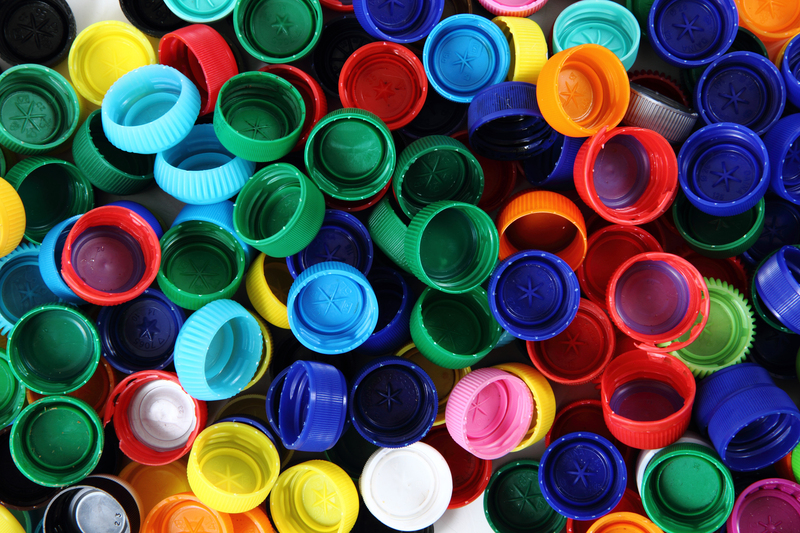Your Guide to Stress-Free Plant Pot Disposal
Whether you're an avid gardener or a casual plant lover, chances are you've accumulated a collection of empty plant pots over time. Disposing of these containers responsibly isn't always straightforward. Proper plant pot disposal not only ensures a clutter-free space but also contributes to a healthier planet. This comprehensive guide covers every aspect of plant pot disposal, from recycling options to creative repurposing, ensuring you manage your pots sustainably and with minimal stress.
Why Responsible Plant Pot Disposal Matters
Plant pots are made from various materials, including plastic, clay, ceramic, and biodegradable substances. Unfortunately, not all of these are easily recyclable, and some can be harmful to the environment if not disposed of correctly. Understanding the importance of plant pot disposal is the first step toward making better choices for your home and the planet.
- Environmental Impact: Incorrect disposal can contribute to plastic pollution and landfill buildup.
- Resource Efficiency: Recycling and reusing conserve resources and reduce waste.
- Community Benefits: Donating or sharing pots supports local gardening initiatives.

Identifying Different Types of Plant Pots
Before diving into disposal methods, it's essential to identify your plant pot's material:
1. Plastic Plant Pots
The most common type, plastic pots are lightweight and inexpensive, but not all plastics are recyclable everywhere. Look for recycling symbols or numbers on the base to determine the type of plastic used.
2. Clay (Terracotta) Pots
These natural, breathable pots are prone to cracking over time. While terracotta disposal is usually environmentally benign, they aren't accepted in most curbside recycling programs.
3. Ceramic and Glazed Pots
Decorative but fragile, these often can't be recycled due to chemical glazes. They require special handling for responsible disposal.
4. Biodegradable Plant Pots
Made from peat, coconut coir, or paper, these break down naturally but still need proper composting to avoid landfill burden.
Step-by-Step Guide to Stress-Free Plant Pot Disposal
1. Reuse Before You Dispose
Repurposing old plant pots is the simplest, eco-friendly strategy. Here's how:
- Refill for new plants: Clean them thoroughly and use them again.
- Organize Garden Tools: Use pots for tool storage or to hold garden markers.
- Create Planter Art: Get creative by painting or decorating them for indoor or outdoor decor.
- Seed Starters: Small pots are perfect for seedlings or propagations.
Tip: Even chipped or cracked clay pots can be broken up for use as drainage at the bottom of new planters.
2. Recycling Plant Pots: What You Need to Know
Plant pot recycling varies depending on your location and the pot's material. Here are key steps to get it right:
- Check Local Guidelines: Contact your local recycling center for rules on plant pot acceptance and sorting.
- Clean Thoroughly: Remove remaining soil and rinse pots; most facilities reject contaminated items.
- Sort by Plastic Type: Sort plastics according to codes (usually 2, 5, or 6 are accepted).
- Use Nursery Return Schemes: Many garden centers offer take-back programs for used pots and trays.
Fact: Some recycling facilities only accept black plant pots if they're made from certain materials, as the dye can interfere with scanning machines. Always double-check before including these in your recycling bin.
3. Composting Biodegradable Pots
Biodegradable plant pot disposal is easy and environmentally sound:
- Tear or break up pots to speed up decomposition.
- Mix with other yard waste for a balanced compost pile.
- Avoid adding to landfill where they can't properly break down.
Note: Only compost those labeled as 100% biodegradable and free from synthetic additives or coatings.
4. Donating and Sharing: Extend the Life of Your Pots
If your pots are in good condition, consider these stress-free plant pot disposal alternatives:
- Donate to community gardens, schools, or urban farming projects.
- Offer on local gardening groups, online marketplaces, or neighborhood apps.
- Check with local nurseries or horticultural societies for pot-collection programs.
Donating your extra pots isn't just eco-friendly--it connects you to your community!
5. Creative Upcycling: When Pots Can't Be Reused Traditionally
Old pots can become:
- Bird feeders or baths
- Mini compost bins
- Candle or lantern holders
- Decorative yard art
Let your imagination run wild and give your unwanted plant pots a second life.
Special Considerations: Disposing of Broken or Unusable Pots
1. Broken Terracotta and Ceramic Pots
Don't toss these in the trash! Here's what you can do:
- Drainage for New Planters: Use broken shards in the bottom of new pots to promote healthy drainage.
- Mosaic Projects: Create beautiful mosaics for garden paths or decorative pieces.
- Hardcore Aggregates: Check if your local recycling center accepts ceramics for building material reuse.
2. Stained or Damaged Plastic Pots
If the plastic is brittle or contaminated beyond cleaning:
- Check Specialized Recyclers: Some companies handle difficult plastics.
- Ask Nurseries: Many have pot "bins" for any condition.
- Last Resort: As a last option, dispose of contaminated pots in the general waste--but only after exhausting other avenues.
This minimizes landfill impact and helps maintain sustainable habits.
Tips for Reducing Future Plant Pot Waste
1. Choose Wisely at Purchase
- Prefer biodegradable pots when starting seeds or small plants.
- Select durable, long-lasting containers to decrease replacement frequency.
- Pick neutral, easily recyclable plastics or stick to natural materials.
2. Support Pot Return & Recycling Programs
Many garden centers now participate in take-back schemes. Ask about plant pot return programs every time you shop!
3. Use Bulk Refills & Bring Your Own Pots
Bringing your own containers to nurseries cuts down on single-use pots and supports a circular economy.

Common Questions About Plant Pot Disposal
Can Black Plastic Plant Pots Be Recycled?
Black plastic can be hard to recycle because automated sorting machines often can't "see" them. Check with your local recycling facility, as rules are changing and more centers now accept black pots if they're marked with the right recycling code.
Is It Okay to Throw Plant Pots in the Trash?
For the environmentally conscious, throwing pots in general waste should be a last resort. Exhaust all other options--reuse, recycle, or donate--to reduce landfill contributions.
What About Commercial Quantities of Pots?
If you're a business or have a large collection to dispose of, contact recycling companies or professional waste management services to arrange bulk collection and recycling. Some nurseries might offer commercial pickup programs.
Conclusion: Make Plant Pot Disposal Easy and Eco-Friendly
With this stress-free guide to plant pot disposal, you can confidently say goodbye to your unused pots while protecting the environment and supporting your local community. Remember:
- Always clean and sort pots before recycling or donating.
- Get creative with repurposing for both functional and decorative uses.
- Encourage others to embrace sustainable plant pot disposal methods.
By making small, informed decisions about how to dispose of plant pots--be they plastic, ceramic, or biodegradable--you contribute to a greener future. Share your tips and this guide to help fellow gardeners experience the satisfaction of stress-free plant pot disposal.
Ready to tackle your own pot pile? Start today and turn plant pot disposal from a chore into an eco-friendly habit!